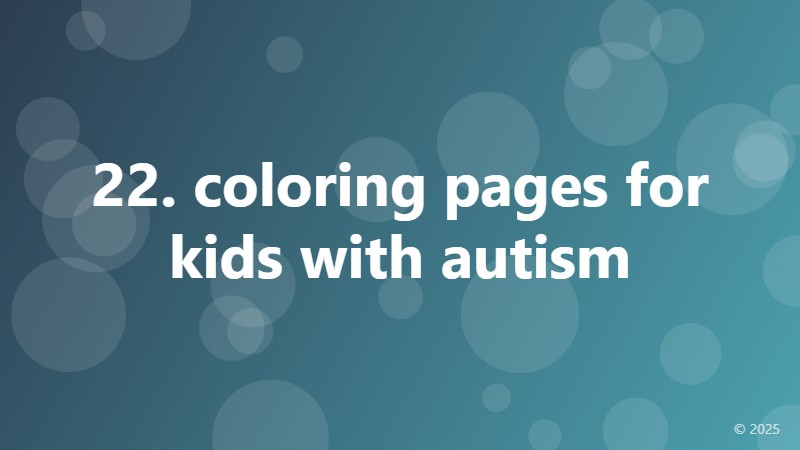22. coloring pages for kids with autism

The Power of Coloring: Unlocking Creativity for Kids with Autism
For children with autism, coloring can be a therapeutic and calming activity that helps them express their emotions and develop their fine motor skills. In fact, many occupational therapists and special education teachers incorporate coloring into their therapy sessions and lesson plans. In this article, we'll explore the benefits of coloring for kids with autism and provide 22 coloring pages that can help unlock their creativity and potential.
Why Coloring is Beneficial for Kids with Autism
Coloring offers a range of benefits for kids with autism, including:
- Improved fine motor skills: Coloring helps children develop their hand-eye coordination, dexterity, and control over their hands and fingers.
- Enhanced creativity: Coloring allows kids to express their imagination and creativity, which can be especially important for children with autism who may struggle with verbal communication.
- Reduced anxiety and stress: The repetitive motion of coloring can be calming and soothing, helping to reduce anxiety and stress in children with autism.
- Developed attention and focus: Coloring requires attention and focus, which can help children with autism improve their concentration and stay engaged.
22 Coloring Pages for Kids with Autism
We've curated a collection of 22 coloring pages that are specifically designed for kids with autism. These pages feature simple, repetitive patterns and shapes that can help children with autism feel calm and engaged.
Here are some of the coloring pages you can expect:
- Animal patterns: Zebras, giraffes, and other animals with bold, black-and-white stripes.
- Geometric shapes: Repetitive patterns of circles, squares, and triangles.
- Nature scenes: Simple, iconic images of trees, flowers, and clouds.
- Abstract designs: Intricate patterns of lines, swirls, and shapes.
Tips for Using Coloring Pages with Kids with Autism
To get the most out of these coloring pages, here are some tips to keep in mind:
- Start with simple designs: Begin with simple, repetitive patterns and gradually introduce more complex designs as your child becomes more confident.
- Use high-quality materials: Invest in good-quality crayons, markers, or colored pencils that are easy to grip and manipulate.
- Encourage creativity: Allow your child to express their creativity and imagination, even if it means deviating from the original design.
- Make it fun: Play calming music, use aromatherapy, or incorporate other sensory activities to make coloring a enjoyable experience.
By incorporating coloring into your child's daily routine, you can help unlock their creativity, improve their fine motor skills, and reduce anxiety and stress. So why not give it a try? Download our 22 coloring pages for kids with autism and watch your child thrive!